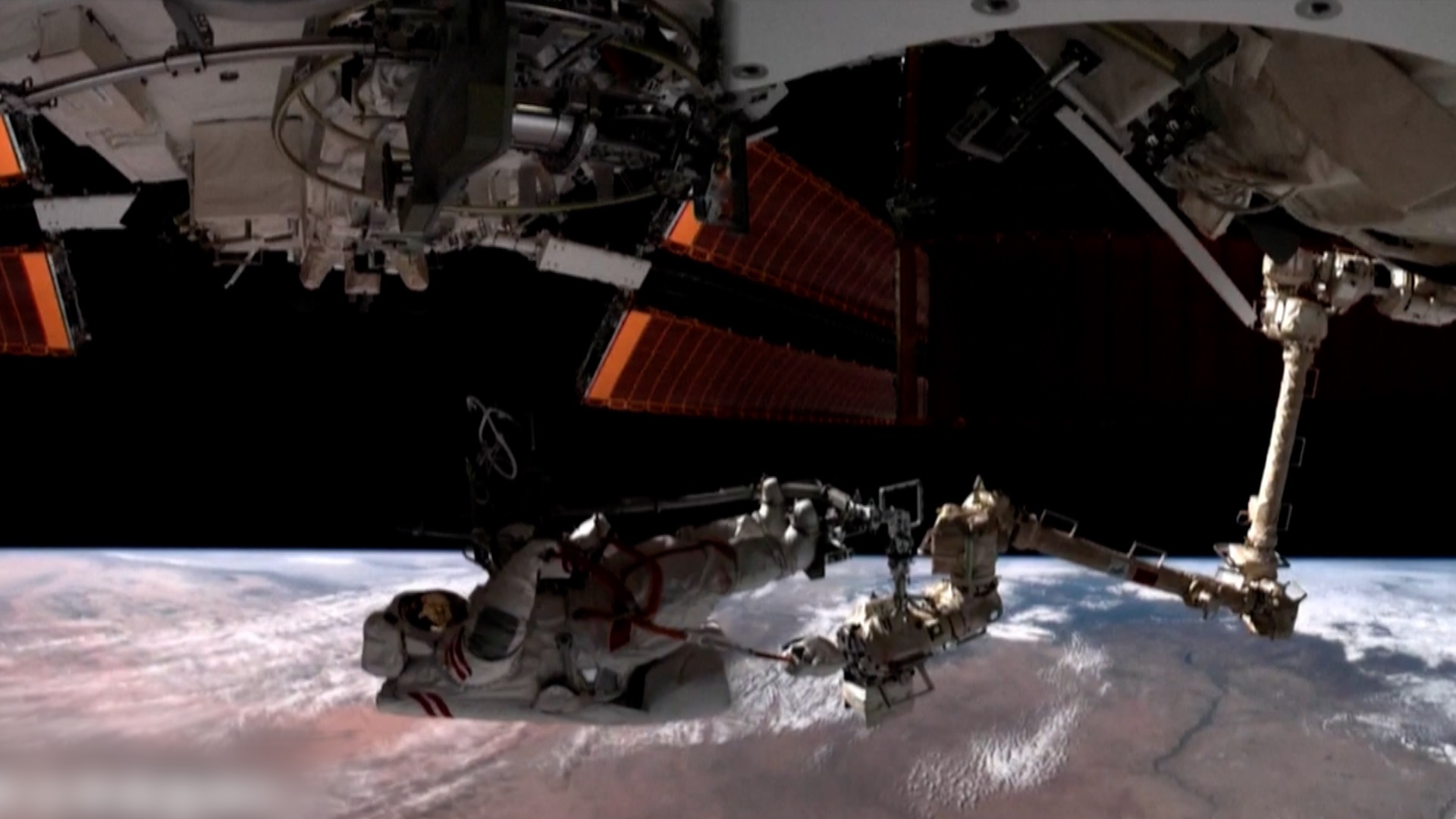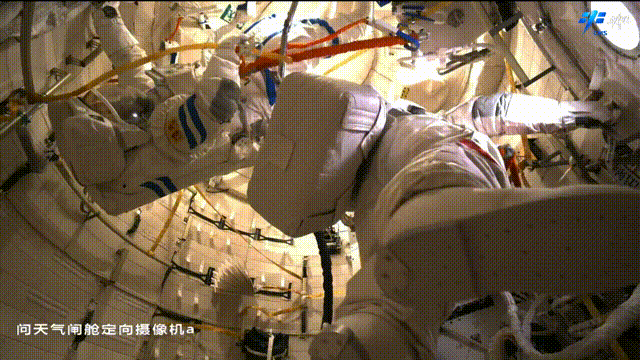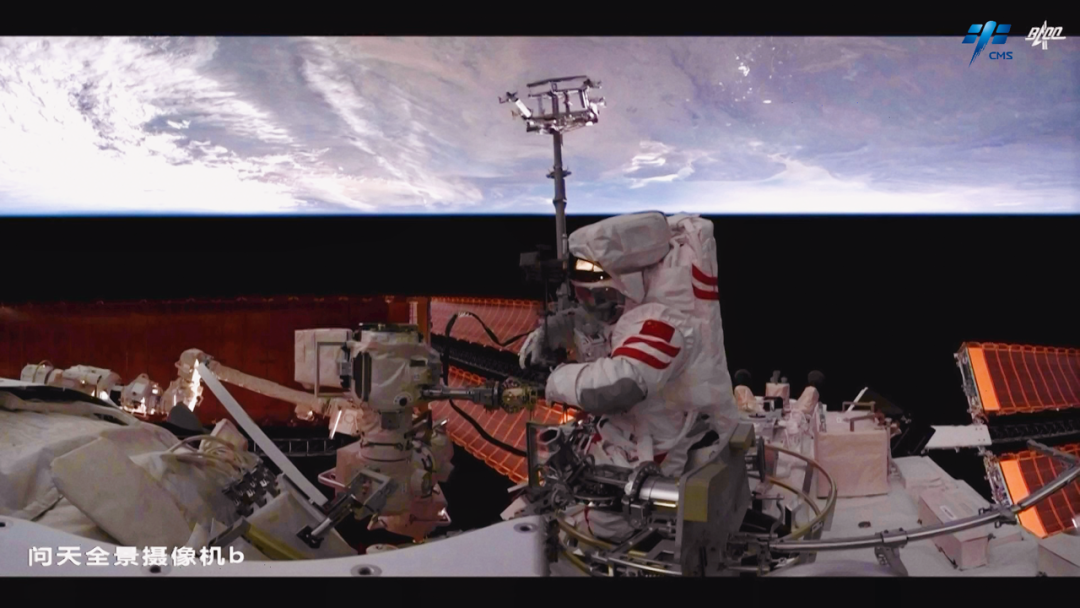00:57

China's Shenzhou-15 astronauts (taikonauts) completed their first spacewalk at 00:16 a.m. BJT Friday with all set tasks fulfilled, according to the China Manned Space Agency (CMSA).
Fei Junlong, who opened the hatch door of the Wentian lab module, initiated the extravehicular activities (EVAs) at 5:10 p.m. Thursday followed by his crewmate Zhang Lu, marking the first EVAs since the space station's full completion.

China's Shenzhou-15 taikonauts inside the Wentian lab module. /CMG
China's Shenzhou-15 taikonauts inside the Wentian lab module. /CMG
Supported by their fellow Deng Qingming inside the space station, Fei and Zhang conducted multiple tasks with the help of robotic arms during the seven-hour spacewalk.
The pair first installed the expansion pumps outside the Mengtian lab module. They also installed a foot-stop, which is used for fixing their feet on the robotic arm.

Shenzhou-15 taikonaut Deng Qingming works inside the space station. /CFP
Shenzhou-15 taikonaut Deng Qingming works inside the space station. /CFP
The EVAs were the first large-scale operation spanning three modules since the assembly configured, Zhu Guangchen, deputy chief designer of the space station system at China Academy of Space Technology, told China Media Group (CMG).
The astronauts had to carry large items through the gap between the solar panels and the modules. In order to ensure a smooth completion, full simulation and analysis were carried out in advance, said Zhu. "All works in normal condition now with all assigned tasks completed according to plan."
Facing more extensive tasks, three relay satellites were used to track the three modules to ensure a smooth space-ground link, said Zou Xuemei, deputy chief of space station mission at Beijing Aerospace Control Center.

China's Shenzhou-15 taikonauts in their first spacewalk. /CMG
China's Shenzhou-15 taikonauts in their first spacewalk. /CMG
The whole process showed close cooperation of the three crew members, Huang Weifen, chief designer of the taikonaut system of the China Manned Space Program, told CMG.
"In the whole process, the procedures were correctly executed and operations well performed, showing strong operational and cooperative abilities," said Huang.
Since their arrival at the space station, the Shenzhou-15 crew has completed the unlocking of all the cabinets, and equipment installation and testing of the Mengtian lab module, said Lin Xiqiang, deputy director of CMSA, adding that experimental work is being carried out in succession.
The crew is expected to conduct more spacewalks to verify all technological capabilities.
Extravehicular installation of cargo
Before, the Shenzhou-15 crew also completed the first batch of cargo installation outside the space station. Payloads include the energy particle detector and plasma in-situ imaging detector have been installed.
The extravehicular installation requires good coordination among the payload transfer system, the airlock cabin, hatch doors and robotic arms. By in-orbit or ground operations, the cargo can be sent outboard or inboard as required.
The technology can greatly improve the efficiency of cargo exchange inside and outside the modules and reduce the workload of taikonauts. More cargo extravehicular installation work will be carried out as planned.